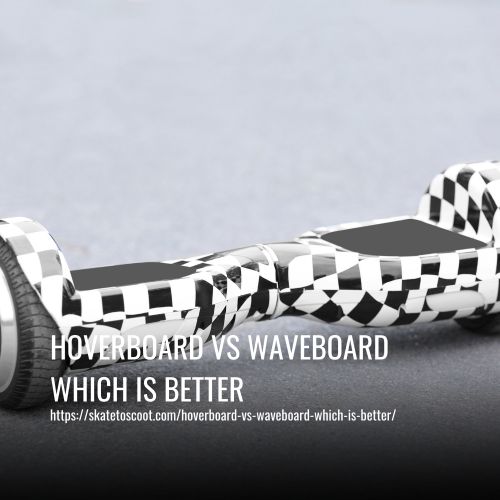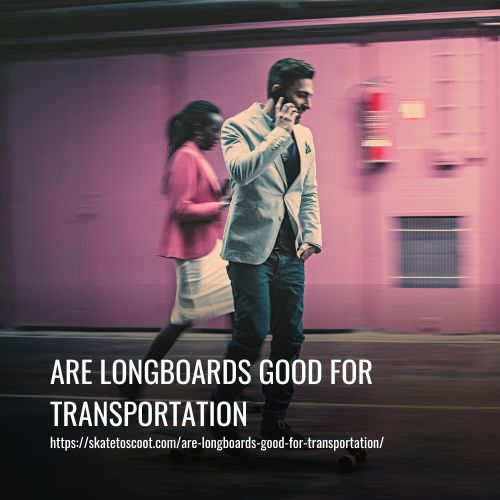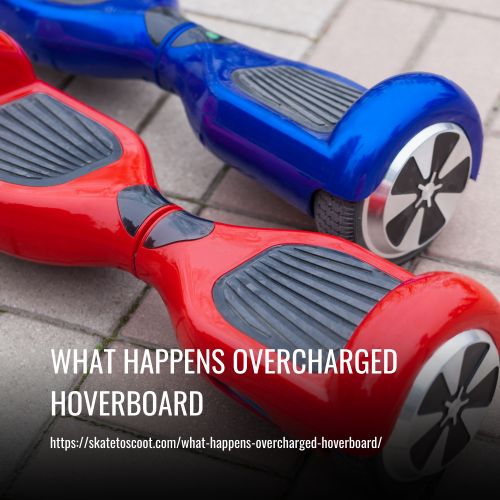As an Amazon Associate we earn from qualifying purchases.
Hoverboards and Waveboards are two mini vehicles that are often confused by people due to their similar names. However, they are two completely different vehicles. Waveboards are an advanced shape of Skateboards, but they are not operated the same way. They require less push while riding and are more advanced. On the other hand, hoverboards are self-balancing vehicles powered by a lithium-ion battery and controlled by a logic board.
Both of these vehicles have their strengths and weaknesses. Waveboards provide a smoother and perfect riding experience and are suitable for performing cool tricks and stunts. The pivoting deck and caster boards allow for more dynamic movements, making it a fun vehicle for energetic riders. Meanwhile, hoverboards provide a convenient and extended ride time, with controlled speed and improved ride times. They are perfect for people looking for a decent urban transportation option that does not require much space.

What’s a Hoverboard and What Do You Do With It?
A hoverboard is a board on wheels that utilizes technology to maintain balance throughout the ride, unlike the hoverboard from Back to the Future. It’s designed to travel on smooth surfaces and handle gentle slopes, but it struggles on rough terrain and hills.
Hoverboards do not levitate over water or land like in the movies. They are a convenient form of urban transportation, and their compact size makes them perfect for urban environments.
The boards use rechargeable batteries, which provide an extended ride time, and the self-balancing technology keeps the ride stable at controlled speeds. With hoverboards, riders can cover distances without breaking a sweat and can easily maneuver through tight spots in busy urban areas.
What’s a Waveboard and Why Do People Like It?
A waveboard, also known as a ripstick, castorboard, or J-board, is a unique and innovative board design that consists of two independent steering wheels on a figure-eight-shaped board. The board starts thin in the middle and widens out as you approach either end. Your feet stand on the widest part of the board, each on either side.
The waveboard takes some getting used to as it requires twisty movements with the feet and hips to give forward thrust. Balancing on it can be quite difficult, and it’s easy to lose balance and face-plant. Unlike hoverboards, which are relatively easy to learn, riding on a waveboard requires god-like balance and skill to master.
So why do people like it? Perhaps because of its unconventional design, which sets it apart from traditional skateboards. Additionally, the challenge of learning how to ride it and the satisfaction of mastering it may be appealing. It also captures attention and makes its riders look cool as it is difficult to ride.
Hoverboard vs. Waveboard
As mentioned above, hoverboards and Waveboards are entirely different vehicles, varying in design, technology, riding experience, and handling. Simply giving them a look helps distinguish their basic differences. However, the aim here is to educate you about their technology to aid your purchasing decision.
When it comes to design, hoverboards are self-balancing scooters with boards on wheels that are electrically powered and work with lithium-ion rechargeable batteries. They offer a smooth and convenient ride with controlled speeds and an average speed of up to 10 miles per hour. Hoverboards are ideal for shorter rides, and users can perform simple tricks.
On the other hand, Waveboards, also known as caster boards or dynamic boards, take some practice to master. Their pivoting deck design allows riders to move and twist their feet and hips to gain forward thrust, making them harder to balance on. Learning to ride a Waveboard requires god-like balance, and users can perform complex tricks once they know how to ride it. Waveboards are ideal for extended rides and offer an improved ride time.
1. Design:
The Waveboard’s design includes two small rotatable wheels, making it capable of traversing rough or bumpy terrain. It features two docks made of high-quality plastic material, ensuring the vehicle remains lightweight. A Torsion Bar links the docks and rotates individually, providing a smoother and more convenient ride.
2. Hoverboards Have Better Balancing Than Waveboards:
Hoverboards have taken the world by storm with their advanced technology and superior balancing feature. Comparatively, Waveboards are extremely challenging to ride and maintain balance for a rider. As Waveboards only have two wheels like a skateboard, it becomes difficult for a rider to maintain balance and ride smoothly, especially for a beginner. This can potentially cause the rider to fall and get injured.
On the other hand, hoverboards are equipped with self-balancing technology, making them easier to ride even for a beginner. The feature automatically adjusts the balance between the rider and the wheels according to the terrain, ensuring a smooth and safe riding experience. It takes only a few minutes to learn to ride a hoverboard, and the rider need not worry about maintaining balance.
3. Waveboards Are Safer Than Hoverboards:
When it comes to mini vehicles, safety is of utmost concern. However, most mini vehicles, including hoverboards and waveboards, lack safety features due to their advanced design and other features. While no vehicle is entirely safe while on the road, the risk of falling down and getting injured still exists for riders of open vehicles.
Hoverboards, in particular, faced many safety concerns in their early days as several reports of catching fire and exploding surfaced. Even though manufacturers have addressed these issues, hoverboards are still not considered entirely safe.
In contrast, waveboards are safer because they do not involve batteries or electronics, eliminating the risk of any mishap. However, riders can still get injured due to a lack of self-balancing technology.
Although hoverboards are not entirely safe, with proper handling and usage, they can be operated safely. Likewise, waveboards are also safe if the rider possesses the necessary skills to ride them. Nevertheless, waveboards remain a safer option than hoverboards due to their basic-looking board design and elimination of any battery or electronic components.
4. Waveboards Are Easy To Handle And Control Than Ho:
Waveboards and hoverboards are two different vehicles that require different handling and controlling methods. Hoverboards are easy to ride and only require the rider to shift their weight in the desired direction. Leaning forward increases speed, leaning backward decreases or stops the hoverboard, and turning requires a shift in body weight. Pressure sensors and gyroscopes work together to provide a smooth riding experience.
On the other hand, waveboards are manually operated, but they don’t require a stable push as with traditional skateboards. The rider can speed up the wheels solely using body motions. Moving the backward dock in a left-right direction increases speed, thanks to the Torsion Bar that connects the docks and allows them to move and rotate freely. Waveboards provide a smoother handling and controlling experience compared to hoverboards and traditional skateboards.
5. Waveboards Have No Speed Limitations:
Waveboards and hoverboards have different riding experiences. Waveboards are operated manually, like traditional skateboards, which allows for greater speed. Hoverboards, on the other hand, are limited by their wheel motor and battery.
Manufacturers produce hoverboards with varying speed limitations, with some models attaining a maximum speed of 20km per hour or 15km per hour, depending on the terrain and model. These limitations result from their electric motor and lithium-ion batteries.
In contrast, Waveboards have no speed limitations, and their top speed can reach up to 40km per hour. The rider can dictate the speed by manually operating the board and adjusting their body weight and foot placement. Riders have the freedom to perform complex and astonishing tricks without worrying about speed limitations.
6. Hoverboards Are Expensive As Compared To Waveboards::
When it comes to the price comparison between hoverboards and waveboards, the difference can be quite significant. Hoverboards come with a variety of features, and their prices can range anywhere from 200 USD to 700 USD, depending on size, efficiency, and other features. On the other hand, waveboards are a much more cost-effective option and can be purchased within the price range of 40 USD to 100 USD.
The reason for this price difference is the quality and features that come with a hoverboard. Hoverboards are known for their outstanding features, such as self-balancing technology, pivoting decks, and rechargeable batteries. These features make hoverboards more expensive than waveboards, which have a simpler design and lack the electric motor and self-balancing technology of hoverboards.
Hoverboard Or Waveboard – Which Is Best?
In comparing hoverboards and waveboards, it’s evident that the two devices differ in size, handling, safety features, and prices. However, this doesn’t necessarily make one superior to another. Both are great and serve different purposes and people. For instance, a hoverboard is perfect for someone who lacks the skill to ride a skateboard or any manual mini-vehicle.
So, which of the two devices is best for you? Well, it depends on your purpose and situation. If you’re looking for a smooth, convenient ride with features such as self-balancing technology, pivoting decks, and rechargeable batteries, then a hoverboard is a perfect choice.
On the other hand, if you enjoy doing cool tricks with a caster board that offers a smoother ride due to its foot placement and body weight, then a waveboard is a better option.
Why Should You Buy A Hoverboard?
Looking for a fun mini-vehicle that you can use both inside and outside? Consider buying a hoverboard. Hoverboards are self-balancing electric scooters that are popular among teenagers and young adults for leisure activities. They are battery-operated and can provide a good battery backup.
If you’re a beginner, hoverboards are a great option because riding them is not a challenging task. You just need to practice for a few minutes, and you’ll be able to ride it. This makes them an excellent choice for parents who want a mini-vehicle for their kids or anyone who is not familiar with manual-driven mini-vehicles.
Furthermore, hoverboards now come with improved features, such as a smoother riding experience, better performance, and enhanced safety features. They are designed to ride on both indoor and outdoor surfaces, making them versatile and convenient. With their outstanding performance and features, anyone can use hoverboards and have the perfect ride every time. Therefore, purchasing a decent hoverboard is an excellent investment for anyone who wants to enjoy a fun activity or commute.
Why Should You Buy A Waveboard?
Waveboards are an advanced type of skateboard consisting of only two wheels that can be easily rotated in any direction. These wheels are specifically designed to shift by changing the rider’s weight accordingly. While Waveboards may be challenging to ride, they are ideal for proficient skateboarders seeking an upgrade.
Unlike battery-operated mini vehicles, Waveboards do not require electricity. Nor do they require continuous pushing of your feet on the ground like a traditional skateboard, rather, you can ride them with the specific motions of your legs and weight shifting.
Waveboards are an affordable option for those seeking to level up their skateboarding game, as they do not require power sources. Thus, it makes them ideal for those who desire an eco-friendly, budget-friendly, and yet still advanced riding experience.
FAQs
Hoverboards are self-balancing electric scooters with two motorized wheels used for personal transportation, whereas Waveboards, also known as caster boards, have two decks joined by a torsion bar and require a twisting motion of the body to propel forward.
Hoverboards generally have a more intuitive learning curve, as they rely on balance and controlled movements. Waveboards might require more practice initially due to the twisting motion involved in propelling forward.
Waveboards are designed specifically for performing tricks and maneuvers. Their design allows for a wide range of movements and tricks once mastered, while Hoverboards are primarily used for transportation and have limited capabilities for tricks.
Both Hoverboards and Waveboards have their safety considerations. Hoverboards may have a risk of falls due to loss of balance or technical malfunctions. Waveboards require good balance and control to prevent accidents, especially when performing tricks.
Hoverboards are more practical for commuting short distances due to their self-propelled nature and ease of use on smooth surfaces. Waveboards are better suited for recreational use and may not be as practical for longer distances or commuting.
Both Hoverboards and Waveboards have varying models suitable for different age groups. Generally, Hoverboards have a broader range of models suitable for a wider age range, while Waveboards might require more physical coordination and are often recommended for older children, teenagers, and adults.
Conclusion:
Whether you prefer the futuristic feel of a hoverboard or the classic style of a waveboard, the most important thing is to have fun while staying safe. Both options provide a unique and exciting way to get around and show off your skills. So, go ahead and choose your favorite, grab your board, and let the adventure begin!
Amazon and the Amazon logo are trademarks of Amazon.com, Inc, or its affiliates.



